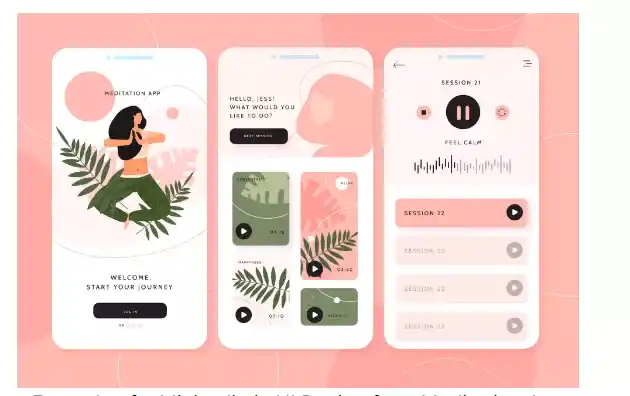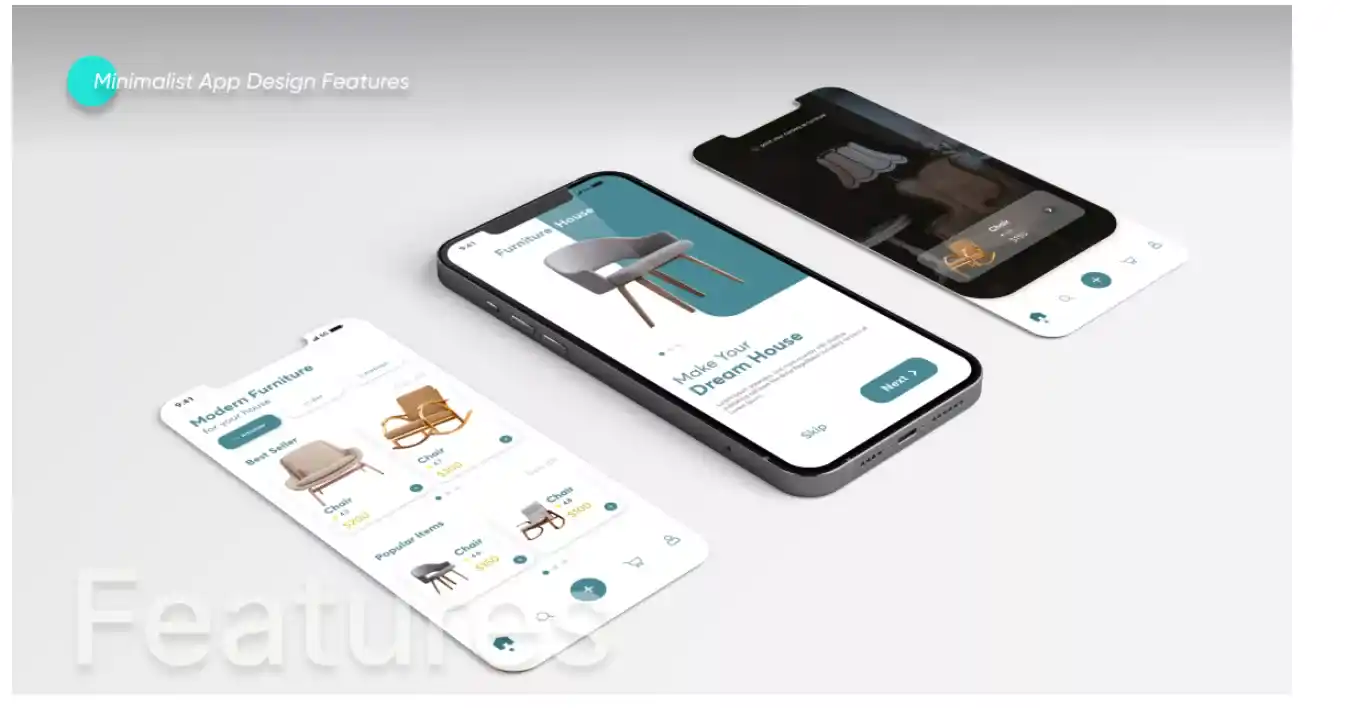Table of Contents
In today’s fast-paced digital landscape, the allure of minimalist apps lies in their ability to provide users with streamlined experiences that prioritize simplicity and efficiency. With their clean design and essential features, minimalist apps offer a clutter-free environment where users can maximize productivity and enhance overall well-being.
By focusing on the essentials, these apps empower users to navigate their tasks with ease, fostering a sense of clarity and focus amidst the digital noise. Through their minimalist approach, these apps not only optimize functionality but also cultivate a positive user experience, promoting a greater sense of balance and fulfillment in users’ lives.
10 Essential Features Of Minimalist Apps
1. Intuitive User Interface (UI)

Minimalist apps are distinguished by their intuitive user interfaces, which emphasize essential functions while eliminating superfluous clutter. The UI is meticulously designed to be visually appealing, ensuring ease of navigation and minimizing distractions. This intentional simplicity empowers users to concentrate on their tasks without feeling inundated.
By prioritizing usability and clarity, minimalist apps create a seamless and focused user experience, enhancing productivity and minimizing cognitive overload.
2. Simplified Functionality
Minimalist apps prioritize simplicity by offering streamlined functionality, focusing solely on a select few core features. This deliberate approach prevents users from feeling overwhelmed by an abundance of options, ensuring a user-friendly experience. By concentrating on essential functions and executing them flawlessly, these apps deliver a streamlined user experience that promotes efficiency and clarity.
Users appreciate the lack of unnecessary complexity, allowing them to engage with the app without distractions or confusion. This commitment to simplicity is a hallmark of minimalist apps, distinguishing them for their ability to prioritize functionality while maintaining an intuitive interface.
3. Clean Design

Minimalist apps stand out for their minimalist design, emphasizing simplicity and functionality. They boast clean layouts, abundant white space, and minimalist typography, creating an uncluttered interface. Intuitive iconography further enhances user experience by simplifying navigation.
This design philosophy reduces cognitive load, making it easier for users to focus on tasks. Visually appealing aesthetics contribute to a sense of calm and concentration, fostering a positive user experience. By prioritizing minimalist principles, such as simplicity and usability, these apps excel in delivering an enhanced user interface that promotes productivity and efficiency.
4. Cross-Platform Compatibility
To ensure broad accessibility and integration into users’ routines, minimalist apps must be compatible across diverse platforms like web, mobile, and desktop. This ensures a seamless experience, enabling users to access their essential tools and resources regardless of the device they’re using. By offering compatibility across multiple platforms, minimalist apps cater to users’ preferences and needs, facilitating easy transitions between devices while maintaining consistency in functionality and user experience.
This versatility enhances the app’s utility and convenience, empowering users to stay productive and focused on their tasks, whether they’re at their desks, on the go, or working remotely. Such comprehensive compatibility underscores the commitment of minimalist apps to meeting users’ diverse needs and promoting efficiency in their daily lives.
5. Seamless Synchronization
Minimalist apps prioritize seamless synchronization across devices, ensuring users’ data stays consistent and up-to-date across platforms. Whether accessed on a smartphone, tablet, or computer, users enjoy uniform access to information and functionality, enhancing continuity and efficiency. This synchronization fosters a seamless user experience, allowing individuals to seamlessly transition between devices without disruption.
By maintaining data coherence and functional parity across various platforms, minimalist apps bolster user productivity and workflow efficiency. This commitment to cross-platform synchronization reflects the core ethos of minimalist app design, which aims to simplify user experiences while maximizing utility and accessibility.
6. Customization Options

Minimalist apps, despite their emphasis on simplicity, should still provide customization options to cater to users’ diverse preferences. This entails enabling users to personalize aspects such as color schemes, layouts, and feature settings. By allowing such customization, minimalist apps empower users to tailor the app according to their specific workflows and requirements. This flexibility enhances user satisfaction and adoption as individuals can adapt the app to align with their unique needs and preferences.
Moreover, offering customization options does not detract from the minimalist ethos; instead, it enriches the user experience by fostering a sense of ownership and control over the app’s interface and functionality. In essence, while maintaining simplicity as a core principle, minimalist apps can achieve greater user engagement and usability through thoughtful customization features.
7. Offline Functionality
In today’s interconnected landscape, the significance of offline functionality cannot be overstated for minimalist apps. These apps should prioritize robust offline capabilities to ensure users’ uninterrupted access to essential tools and information, even in the absence of an internet connection or during connectivity issues. By offering offline functionality, minimalist apps empower users to continue working seamlessly and access vital resources regardless of their location or connectivity status.
This feature enhances the reliability and versatility of minimalist apps, catering to users’ needs in various scenarios, such as travel, remote locations, or areas with limited network coverage. Ultimately, by incorporating robust offline capabilities, minimalist apps bolster users’ productivity, efficiency, and overall satisfaction, reinforcing their position as indispensable tools for modern living.
8. Focus on Essential Features
Minimalist apps embody simplicity by prioritizing essential features that enhance user experience without overwhelming complexity. These features are meticulously selected based on user feedback and insights, ensuring alignment with users’ goals and objectives. By focusing on what truly matters to users, minimalist apps streamline functionality, promoting clarity and efficiency.
Through careful curation, developers can create minimalist apps that resonate with users, providing a seamless and intuitive experience. This approach fosters a sense of empowerment and satisfaction, as users can accomplish their tasks with ease and focus. Ultimately, minimalist apps represent a mindful approach to technology, emphasizing quality over quantity and delivering meaningful value to users’ lives.
9. Seamless Integration
Minimalist apps prioritize seamless integration with daily-use tools like calendar apps, task managers, and communication platforms. This integration streamlines workflow, eliminating the need to switch between multiple applications. By seamlessly syncing data and functions across platforms, users experience enhanced productivity and workflow efficiency. For instance, a minimalist task manager app might integrate with a calendar app, allowing users to schedule tasks directly from their calendar without navigating between separate interfaces.
Similarly, integration with communication tools enables users to collaborate seamlessly on tasks or projects within the minimalist app environment. This cohesive integration not only simplifies user experience but also fosters a sense of continuity and flow in users’ daily workflows. Ultimately, by seamlessly integrating with essential tools and platforms, minimalist apps empower users to accomplish more with minimal effort, promoting a positive and efficient user experience.
10. Continuous Improvement
Continuous improvement is paramount for minimalist apps to stay relevant and valuable. This entails attentively considering user feedback and market trends to drive iteration. Regular updates incorporating new features, performance enhancements, and bug fixes are vital for maintaining user satisfaction and engagement. By embracing a dynamic approach to development, minimalist apps can evolve alongside user needs and technological advancements.
This iterative process fosters a culture of responsiveness and innovation, ensuring that the app remains competitive and adaptive in a rapidly changing landscape. Ultimately, prioritizing continuous improvement reinforces the app’s position as a trusted tool for enhancing productivity and well-being, solidifying its significance in users’ lives over time.
Related Article:
How to Build Software: 10 Full Proof Tips and Steps for Software Development
Conclusion
In conclusion, minimalist apps epitomize intuitive design, streamlined functionality, and a laser focus on essential features. By emphasizing usability, clarity, and productivity, these apps deliver a seamless user experience that fosters concentration, effectiveness, and overall well-being.
By integrating the indispensable features discussed in this article, developers have the opportunity to craft minimalist apps that deeply connect with users and contribute positively to their daily lives. With their simplicity and purposeful design, minimalist apps have the potential to make a significant impact, empowering users to achieve their goals with ease and satisfaction.